Recognized as one of the most influential concert promoters in history, Bill Graham (January 8, 1931 – October 25, 1991) launched the careers of countless rock ’n’ roll legends in the 1960s at his famed Fillmore Auditorium, and was a prime mover behind the 1967 Summer of Love.
Graham conceived of rock ’n’ roll as a powerful force for supporting humanitarian causes and was instrumental in the production of milestone benefit concerts such as Live Aid (1985) and Human Rights Now! (1988).
As a promoter and manager, he worked with iconic artists including the Grateful Dead, Jefferson Airplane, Janis Joplin, Jimi Hendrix, Santana, Fleetwood Mac, the Who, Led Zeppelin, the Doors and the Rolling Stones.
Bill Graham’s childhood experiences as a Jewish emigrant from Nazi Germany fueled his drive and ingenuity as a cultural innovator and advocate for social justice. Born in Berlin, Graham arrived in New York at the age of 11 as part of a Red Cross effort to help Jewish children fleeing the Nazis.
He went to live with a foster family in the Bronx, and spent his teenage years in New York City before being drafted into the U.S. Army to fight in the Korean War. Graham moved to San Francisco just as the hippie movement was gathering steam, and became the business manager for the San Francisco Mime Troupe, a radical theater company that performed for free in parks. The first show Graham presented was on November 6, 1965, a fundraiser to support the legal defense of one of the Mime Troupe actors.
It was a transformative moment for the 34-year-old, who’d finally found something he was good at by which he could also earn a living. Soon after, he took over the lease on the famed Fillmore Auditorium, where he produced groundbreaking shows throughout the 1960s, including sold-out concerts by the Grateful Dead, Cream, Big Brother and the Holding Company and the Doors, among many others. He also pioneered the practice of introducing artists from different genres to the rock audience, booking greats from the worlds of jazz, R&B, world music and more. Graham’s mastery at promoting, marketing and managing artists propelled him to become one of the music industry’s most important figures.
In 1976, I conducted an interview with Graham at his house in Mill Valley, Calif. At the time, the Bay Area was experiencing a new wave of successful rock stars, including groups like the Doobie Brothers and Tower of Power.
I really liked Graham. Around his concert promotions and productions he was always hectic and frantic, but at his home it was a mellow scene.
Listen to the Who, recorded at Fillmore East
Best Classic Bands: Is there still a viable San Francisco music scene?
Bill Graham: There was never a San Francisco sound. They may do the same thing to an audience though, which is give them pleasure. There is something that [the San Francisco bands] always had in common from the beginning, something hardly spoken about in the media after all these years. Starting with the Grateful Dead, they always went to the gigs with the intention of putting it out there. It was the lack of professionalism at the beginning that made that possible. It wasn’t that the contract said 45 minutes and “that’s what we’ve got to play.” The Dead were the first one who asked to play longer. They wanted to extend the relationship between the audience and themselves. And that prevails to this day. You can’t get them to play shorter sets. Carlos [Santana] always wanted to play longer, which is very different from the professional attitude that you get.
One of the reasons for that is you get a man like [Jerry Garcia] who can make all kinds of money across the country [but] the Grateful Dead just came off the road and he still has a desire to play. He takes his [side] band and plays a club that holds 400 people! When you go out, you want to make music and you want to make a living. There are times when I really think the Grateful Dead are demented. Insane. They could have made 10 times as much money.
Can you remember your first meetings with Carlos Santana and Jerry Garcia?
I met Jerry in 1965. H was doing the Acid Tests [events where LSD was freely distributed and multi-media presentations took place]. I thought he and his entire band were from another planet. I was very disturbed at those first parties because—and there’s a lot of differences in opinion—grown-ups as well as kids were testing their metabolism. I was producing theater in San Francisco at that time, where the group [the Dead] was still called the Warlocks, doing benefits involving these groups. I got to know him later on.
Carlos was in 1967. I had the Fillmore in San Francisco, and Paul Butterfield was playing. My office was right above the marquee. There were windows over the marquee and you had to go through that door in my office on the second floor to change the lettering. Anyway, I’m sitting in my office in the middle of the night and heard some noises outside my window. I went to the window to look outside and there are two guys who climbed up a rain pipe to get to the second level to get it. It was Carlos and Michael Carabello, who was a conga player friend of his.
They were trying to get in to see Butterfield. He told me he was Mexican and liked Latin music, and my real joy in life is Latin music. We started talking and he said he had some musicians, and I said let me hear them—and that’s how we met. The thing I like the most about him, and respect the most, is that in the area of business, it’s not that he gives me carte blanche, but that he listens. The Bay Area is a conglomeration of professional rejects from the rest of the world: actors, who couldn’t make it, dancers who couldn’t make it.
Watch Santana perform at Fillmore West in 1971
Before Woodstock, if you had a hit album, it sold 700,000 or 800,000 units. Today an album will sell three million units and there won’t be any headlines. How can you retain the quality of the soup when you add water?
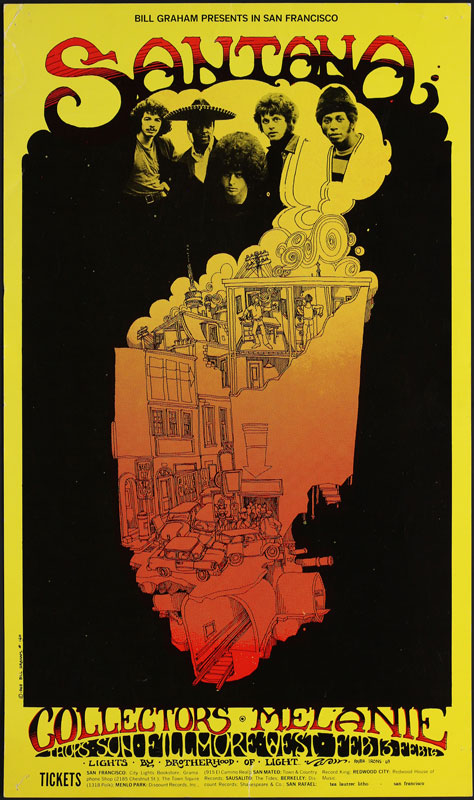 Do you feel parental about some groups or individuals you’ve gotten close to over the years?
Do you feel parental about some groups or individuals you’ve gotten close to over the years?
Words are thrown around—brother, sister, parental. All I know is that they think I’m a very good businessman. I think I know how to deal with people, but not [I’m not] a very good businessman. I think I have some idea about music and what the streets are all about, and about what downtown is all about. I was a New York energy freak to some extent, and I still am. But I found out every mile didn’t have to be four minutes. I didn’t have to catch that plane.
Jimi Hendrix once came late for a show. I’m pacing in front of the Fillmore, and he got out of the cab, and I was yelling at him, and he looked at me and said, “There was this great movie on in the motel.” Little by little, it took me four or five years to learn this, I finally realized that after the gig I could do the yelling. In the long run it’s the public that has to get the good energy from them. I really sincerely feel this, that the reason the relationship lasted over the years, is that those of us who live in the Bay Area have always had the same goal: We want to turn people on and we want them to have a good time.
That’s the dilemma a musician has. A musician may think he played a shit set, and the audience out there is going crazy.
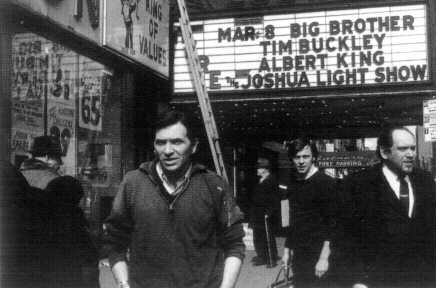
Bill Graham (in foreground) in front of the Fillmore East’s opening night marquee (Photo: Linda Eastman)
Rock and roll has moved into the big arenas. Was that the logical extension from the Fillmores and even the ballroom circuit?
You can’t get any bigger. [Music] has reached the largest securable facility. The reason Woodstocks don’t work is that you can’t put up walls. You can put cement around a stadium. If you want a couple of hundred thousand people, there are no facilities that large. It’s been proven that if you can put up a fence to contain 450,000 people, how do you stop the other 200,000?
Could you have predicted the vastness of the present concert situation?
Yes, and I must be honest at the same time and cop to the fact that a lot of the things I was putting down, predicting what would happen, did happen, and I joined the ranks. We may have created the ranks and everybody joined them. Basically, what it amounts to is supply and demand. The artist’s theory is that “my life is so busy now,” and he would like to be with the luxuries life has afforded him. If the Dead could spend one night in San Francisco playing a big gig instead of three smaller shows, the next two nights are theirs to be in their home or with their lady. That’s the key; it’s not that they want to play less. In the summer of 1973 or ’74, we took Crosby, Stills, Nash and Young, who came to us and said, “We want to play a lot of indoors and outdoors dates,” We did a 31-city tour. Seventeen of those dates were in ballparks. That was the beginning. The logistics could work.
Related: 10 great “Live at the Fillmore” albums
Your favorite concert performer?
Otis Redding. The single most extraordinary talent I had ever seen. A six-foot-three Black Adonis in a green suit, a black shirt and a yellow tie who moved like a serpent or a panther stalking his prey.
Watch the complete documentary Fillmore, featuring performances from the final days of the San Francisco venue operated by Graham
Related: Graham died in a helicopter crash in 1991


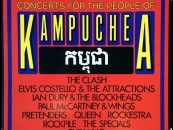
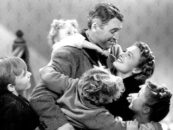
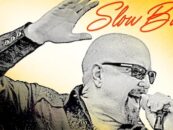
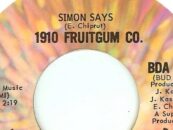

3 Comments so far
Jump into a conversationI lived in Flushing, Queens, N.Y. which was about 10 miles from the Fillmore East. In 1967 (I was 17) and went to my first indoor concert with drummer, Buddy Rich as the opening act then followed by The Amboy Dukes (Ted Nugents band) and the headliner was Steppenwolf. They were big in those days. After that first show, the Fillmore became my weekend hangout. The best seats in the house were $4.50 to see one show and there were two shows every Friday and Saturday night. I was lucky enough to see Jethro Tull, Santana, Doobie Bros., Allman Bros. Canned Heat, Cream, The Nazz (Todd Rundgrens band) & many others as the first act & not the headliner. When Hendrix played I would go to both shows (8pm & 11pm) each night. Those were the best (musically) 3 years of my life. The other place to see rock bands was in Central Park at the Wollman Skating Rink. Originally the Rheingold Beer Festival and later the Schaffer Music Festival. I saw Jimi there for the 1st time opening up for The Young Rascals. Jimi had played Monterrey Pop the weekend before. Those were great days of my youth. Mr. Graham you sure knew how to put on a show and added the Joshua Light Show to boot. R.I.P. Mr. Graham, the master showman.
Well gang, it’s me again but just a year later. I’m very surprised that I was the only one to write a comment on such a wonderful place to be and hear music. From 1967 to 1970 Mr. Graham allowed me to expand my musical horizons. He could be a terror at times but he was always fair. At one show I attended (Johnny Winter And) my seats were mid orchestra level about 20 rows back. When I arrived there was this entire sound board that covered about 20 seats. The attendant told me and my friend to stay while he spoke to the manager. Bill came down and took a look, greeted us and gave us two tickets in the 2nd row orchestra. They were making the Johnny Winter And (w/Rick Derringer) Live Album. I’ll never forget that night. He was a cool guy who wanted us to just have a good time. R.I.P. Bill
BTW, At one point Bill was video taping the shows. Does anyone know where those video tapes are or where those shows can be viewed? Thanks…
Ezyrider: Are you aware of the Bill Graham Foundation? Perhaps someone there could assist you regarding the tapes from the Fillmore East.
As for Bill Graham and the Fillmore, my first concert was at the original Fillmore in the Fillmore District July 17, 1966, I was so young. Jefferson Airplane with their original female singer, Signe Toly Anderson, The Grateful Dead and The New Breed from Sacramento played. I was in the fan club for the New Breed so that is why I was there. My friend knew someone who lived in the City so we stayed at her parents’ house and went to the concert. What a wonderful eye opening experience that was, not to mention great concert. I fell in love with Jefferson Airplane and still do to this day. Love Marty’s voice.
While The New Breed are long gone, one of their members went on to join Poco and from there, The Eagles.
As for Bill Graham, what a force, huh? I can’t imagine my teen years without him. Not only did we go to concerts at The Fillmore (both original and on Market Street), we also went to some at Winterland and Fillmore West on Market Street.
Most outstanding for me would be Led Zeppelin and Rory Gallagher.
How lucky were we and what a time to be young, huh?